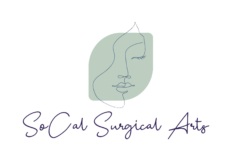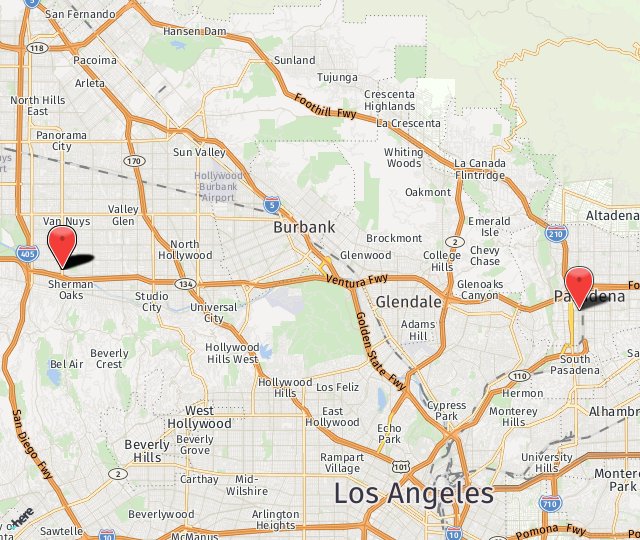Augmentation mammaplasty (breast enlargement) is performed to increase breast size and/or fix breast asymmetry. Candidates include women who want larger breasts, and those who want to restore the breast volume often lost as a result of pregnancy or significant weight loss. Breasts can be enlarged with implants or by fat transplantation. Augmentation mammaplasty is not a substitute for mastopexy, which is a procedure to "lift" breasts that sag significantly.
Breast Augmentation With Implants
Silicone and saline are the two implant types most commonly used in augmentation mammaplasty. Silicone implants feel more like natural breasts than saline ones. However, if a saline implant ruptures, the saline is naturally absorbed by the body, whereas if a silicone implant has an extracapsular rupture (a rupture to the outer capsule), silicone filler leaks into the body, possibly resulting in inflammatory nodules or enlarged lymph glands.
Implants are placed behind each breast, underneath either breast tissue or the chest-wall muscle. The procedure lasts 1 to 2 hours, and is typically performed with general anesthesia, although local anesthesia combined with a sedative may be used. Incisions are made in inconspicuous places (in the armpit, in the crease on the underside of the breast, or around the areola) to minimize scar visibility. The breast is then lifted, creating a pocket into which the implant is inserted.
Advantages of implant placement behind the chest-wall muscle include a possible reduced risk of capsular contracture (hardening of scar tissue around implant), and less interference during mammograms. Disadvantages include the possible need for drainage tubes, and a longer recovery period. Advantages of implant placement beneath breast tissue include that the breasts move more naturally as the patient uses her chest muscles, and that slight breast sagging is corrected.
Other types of implants include "gummy bear," round, smooth and textured.
Augmentation With Fat Grafting
Augmentation mammaplasty with fat transplantation (fat transfer) uses liposuction to harvest excess fat from other parts of the body; the fat is then injected into the breasts. Augmentation mammaplasty is appropriate for women who are not looking for a dramatic increase in breast size, and want breasts that look and feel as natural as possible.
For a number of weeks prior to augmentation mammaplasty, tissue expanders may be placed below the muscles of the chest wall to expand the breasts, and increase the amount of fat they can hold. When the tissue has expanded enough, augmentation using fat transfer can begin. First, fat is removed using liposuction, in which a cannula (a thin, hollow tube) is inserted through small incisions, and then moved back and forth to loosen excess fat, which is suctioned out using a vacuum or a cannula-attached syringe. The harvested fat cells are then purified. In the second procedure, which takes place on the same day, the fat is injected into the breast through small incisions. The procedure takes approximately 4 to 5 hours.
Saline vs. Silicone vs. Gummy Bear
There are several types of breast implants commonly used in augmentation mammaplasty:
Saline implants: Saline implants are filled with sterile saltwater (saline). They can be filled with different amounts of saline, which can affect the shape, firmness, and feel of the breast. Saline implants are inserted empty and then filled once they are in place.
Silicone implants: Silicone implants are filled with silicone gel, which closely mimics the feel of natural breast tissue. They are pre-filled before insertion. Silicone implants are available in different shapes and textures to suit individual preferences.
Gummy bear implants: Also known as cohesive gel implants, gummy bear implants are made of a thicker, form-stable silicone gel. They maintain their shape even if the implant shell is broken. This type of implant is known for its natural look and feel and reduced risk of rippling or wrinkling.
Your surgeon will help you choose the type of implant that best suits your anatomy, lifestyle, and aesthetic goals.
There are many variables to consider when planning a breast augmentation, but the issue of saline vs. silicone is one of the most fundamental. They each have their advantages, and the U.S. Food and Drug Administration (FDA) has determined that both options are safe to use. The Southern California Center for Surgical Arts offers saline, silicone, and gummy bear (gel) implants based on your preferences for texture, placement, and rupture detection.
Texture
Many women feel that silicone implants feel more natural since the consistency of the gel is closer to that of breast tissue. The outward pressure that silicone exerts on the implant helps it retain a natural shape. Silicone has a tendency to ripple in response to the pressure of the surrounding natural breast tissue, making it a better choice for women who are very thin, undergoing breast reconstruction surgery, or want their implant placed above the pectoral muscle.
Placement
Saline implants are filled after they are placed, while silicone implants are already completely full before surgery. Silicone implants, therefore, require a larger incision than saline implants, which requires greater care in placing the incision. In either case, the incisions must be strategically placed to conceal the scars.
Detecting Ruptures
No breast implant is expected to last a lifetime, making ruptures a possibility you need to consider. Saline is the better choice in the event of a rupture, as the saline solution can be safely absorbed by the body. When a silicone implant ruptures, the gel quickly leaks out of the implant but remains with the tissue holding the implant in place. It can remain there undetected until your next breast exam, making it important to undergo MRI screening every two to three years after breast augmentation surgery.
Recovery From Breast Augmentation
After augmentation mammaplasty with implants, drainage tubes may be inserted; incisions are stitched, taped and bandaged. A surgical bra is typically put over the bandages to minimize swelling and support the breasts. For a few days postsurgery, most patients feel tired and sore, but many return to work within a week. Stitches are removed in 1 week to 10 days; postoperative pain, swelling and sensitivity diminish during the first few weeks. Scars begin to fade in a few months.
After augmentation mammaplasty with fat transplantation, recovery time is short, with normal activities being resumed as soon as the patient feels comfortable. Compression garments are typically worn over the areas that received liposuction.
Risks of Breast Implants
In addition to the risks associated with surgery and anesthesia, those related to augmentation mammaplasty using implants include the following:
- Capsular contracture
- Implant leaks and ruptures
- Implant deflation or shifting
- Temporary or permanent change in nipple/breast sensation
- Irregularities in breast contour/shape
- Asymmetry
- Partial or total loss of nipple/areola
The risks related to augmentation mammaplasty using fat transplantation include those related to liposuction, as well as the following:
- Calcification
- Fat embolism
- Fat necrosis
- Oil cysts
- Loss of volume
Because of the loss of volume that occurs when fat is reabsorbed by the body, touch-up injections of fat are often necessary. Injections can be performed using local anesthesia.
About Our Doctors
Husam Elias MD DMD FACS is a member of the American Board of Cosmetic Surgery (ABCS), the American Board of Facial Cosmetic Surgery (ABFCS), and the American Board of Oral and Maxillofacial Surgery (ABOMS). He is an accomplished surgeon and a former section head of Maxillofacial surgery at the Cleveland Clinic Head and Neck Institute. Dr. Elias was also a staff surgeon at the Head and Neck /Maxillofacial Surgery department at Kaiser Permanente Los Angeles Medical Center, one of the top hospitals in the U.S.
Dr. Pouya Vakilian is a board-certified oral and maxillofacial surgeon focusing on minimally invasive techniques and providing excellent outcomes with shorter recovery. He completed his dental training at the Harvard School of Dental Medicine, graduating at the top of his class with honors. He also served as the president of the Harvard Oral and Maxillofacial Surgery Society for four years and has published multiple papers in his field.
Schedule a Breast Augmentation Consultation
The decision to undergo breast augmentation surgery is highly personal, but it can boost your self-esteem and broaden your clothing options. The Southern California Center for Surgical Arts prides itself on helping women achieve the best possible results. It will take time to help you decide whether saline or silicone implants are the best option for you. Contact us at our Sherman Oaks office at (818) 789-6622 or our Pasadena office at (624) 440-0099 to schedule a consultation today.

